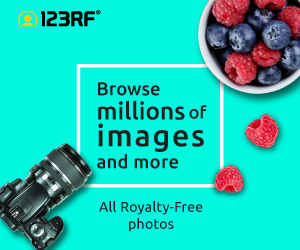Although digital cameras have been around for a few years and are becoming more and more popular many of us still have a large number of older film camera paper prints, slides and negatives. Most people keep their paper prints and negatives at their homes and only use digital formats for new photos they shoot with their new digital cameras. In this article we will discuss converting your old paper prints into digital format.
Photos are usually kept at home in one of three formats:
Paper prints: The most common format, usually at sizes like 4X6 and 5X7. Over time paper prints tend to lose their quality. Depending on how well they are kept the paper might turn yellow and bend and the colors might fade.
Negatives: Also known simply as film. This is the processed film usually 35mm from which the prints where made. Although negatives can get damaged over time they are more likely to maintain their high quality. Negatives are hardly used unless new paper prints are needed.
Slides: Very similar to negatives used for projecting photos on a large screen.
There are many advantages to digital photography. Having your photo album in digital format allows you to easily print paper copies either at home or using a printing service, to view your photos on your computer, to share photos with friends and family and maybe most importantly to practically archive your photos for eternity. So if digital format is that good why not convert all those old photos from traditional paper and negatives to digital? Here is how:
There are different considerations when converting from paper to digital. Professional photographers spend a lot of time and money on this process. For most amateurs and consumers very simple methods can be used which are both cheap and easy. Scanning paper prints and negatives requires different equipment and considerations. For most home users scanning the negatives is not necessary.
Scanning paper photos prints
Photo paper prints are easy to scan. You can choose to scan them yourself at home (purchasing a scanner that can do the job is usually cheap and costs less than a $100). You can also choose to mail them (or hand them) to a professional scanning service that will scan them for you and mail you back the originals and a DVD with the digital scans (such services include www.digmypics.com, www.digitalpickle.com, www.britepix.com and many more)
There are pros and cons to scanning at home or using a professional service. If you have a small number of photos scanning at home is easier. If you have plenty of photos using a service might be easier but you can end up spending more money. In addition mailing your one and only hardcopy of your photos is a risk since they might get lost.
If you are going to scan at home consider the following:
Resolution: The resolution of a scan is measured by the number of dots per inch that the scanner can produce. Most scanners can scan at 1200 DPI or more. Usually the scanner can be set to scan at different resolutions. The higher the resolution the slower the scan and the bigger the photo file size will be. For most paper prints scanning at 300 to 600 DPI is enough but you can experiment scanning at higher resolutions if you feel it provides better results.
Speed: If you have a small number of photos speed is not an issue. If you have hundreds or more of photos scanning speed becomes important. To get fast scans you would have to scan at the lowest resolution possible that results in good enough scans – for most paper prints 300 to 600 DPI is enough.. Also if you’re going to buy a scanner check the scanning speed (usually measured in the number of scans per minute make sure that you check the speed at the DPI you’re going to use).
Photo feeding: If you only have a small number of photos this is not an issue. If you have many photos make sure that the scanner you buy allows fast and easy loading of photos. Some higher-end scanners will let you load a stack of photos and will automatically feed and scan them for you. These scanners are the right choice if you are planning on scanning hundreds or more photos.
Scanning negatives and slides
Scanning negatives and slides is harder than scanning paper prints. In most cases it is easier and maybe cheaper to use a professional scanning service (such services include www.slidescanning.com, www.myspecialphotos.com, www.pixmonix.com and many more). If you want to scan at home your standard flat scanner will not be good enough. In most cases you will need to spend money on purchasing a film/slides scanner. Those scanners are more expensive than the flat paper scanners. Negatives and slides are small high resolution sources and thus require scanning at higher DPI than paper prints. In most cases 2400DPI or higher should be used.
The considerations for scanning negatives and slides are similar to scanning paper prints. If you need to scan just a few negatives or slides speed and ease are not important but if you’re going to scan hundreds or more you should spend more money on scanners that can feed the negatives or slides automatically or can just load a roll of film and scan it.
The good news is that in most cases scanning negatives is not needed at all. For most amateurs and consumers scanning home photo paper prints is more than enough and scanning the source negatives is a not needed. It is recommended of course to keep the negatives in a safe place. You can use the digital scans for future prints or just for viewing on your computer screen and sharing with your friends and family.
In conclusion scanning your photo paper prints is easy. You can do it yourself at home or you can use a professional scanning service. You can convert all your memories into digital format with a small investment and make sure that you can enjoy those photos and also keep them in their original quality for eternity.
Subscribe to:
Post Comments (Atom)




















No comments:
Post a Comment